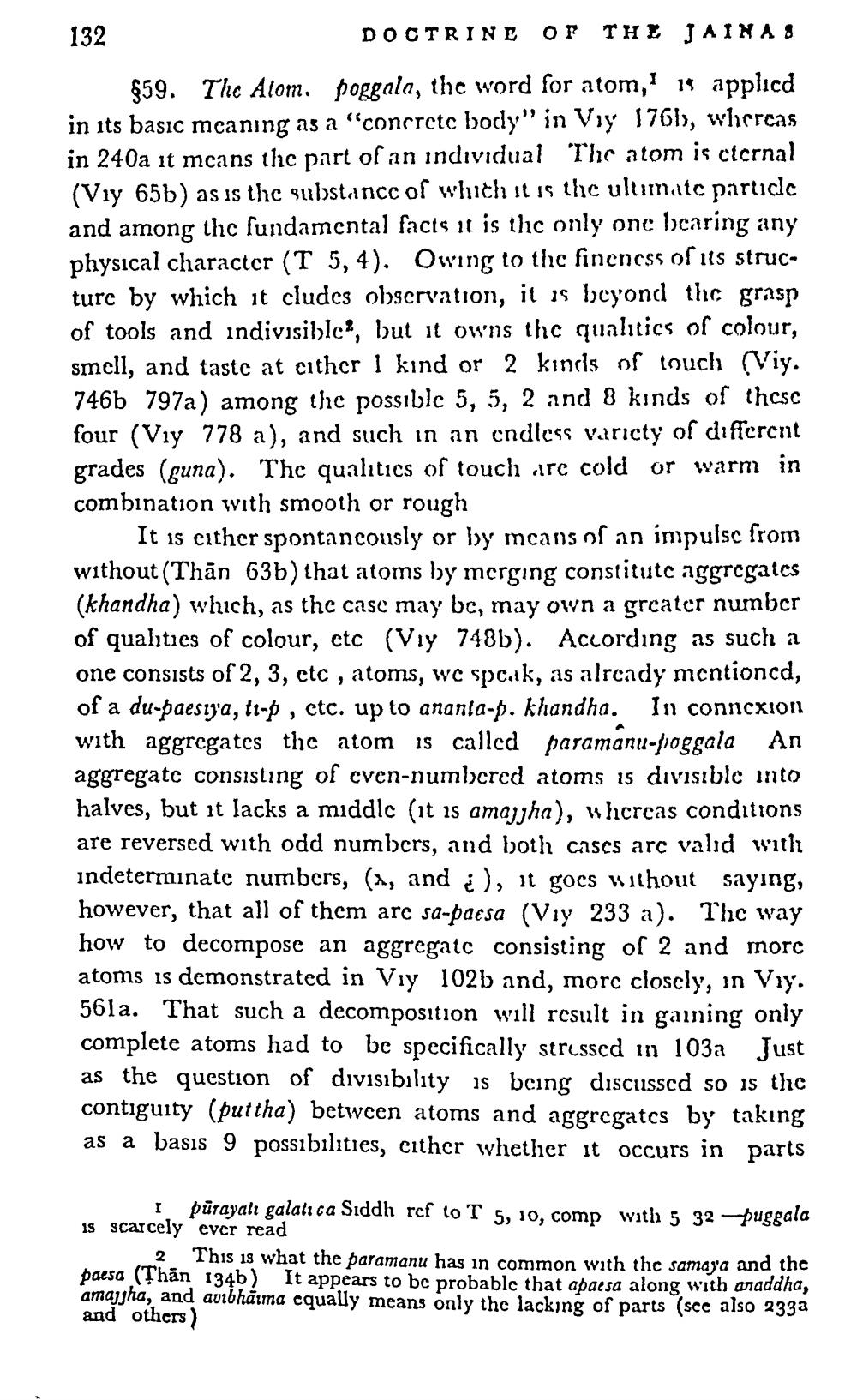________________
DOCTRINE OF THE JAINAS
1
$59. The Atom. poggala, the word for atom, is applied in its basic meaning as a "concrete body" in Viy 176b, whereas in 240a it means the part of an individual The atom is eternal (Viy 65b) as is the substance of which it is the ultimate particle and among the fundamental facts it is the only one bearing any physical character (T 5, 4). Owing to the fineness of its structure by which it cludes observation, it is beyond the grasp of tools and indivisible, but it owns the qualities of colour, smell, and taste at either 1 kind or 2 kinds of touch (Viy. 746b 797a) among the possible 5, 5, 2 and 8 kinds of these four (Viy 778 a), and such in an endless variety of different grades (guna). The qualities of touch are cold or warm in combination with smooth or rough
It is either spontaneously or by means of an impulse from without (Than 63b) that atoms by merging constitute aggregates (khandha) which, as the case may be, may own a greater number of qualities of colour, etc (Viy 748b). According as such a one consists of 2, 3, etc, atoms, we speak, as already mentioned, of a du-paesiya, ti-p, etc. up to ananta-p. khandha. In connexion with aggregates the atom is called paramanu-poggala An aggregate consisting of even-numbered atoms is divisible into halves, but it lacks a middle (it is amajjha), whereas conditions are reversed with odd numbers, and both cases are valid with indeterminate numbers, (x, and ), it goes without saying, however, that all of them are sa-paesa (V1y 233 a). The way how to decompose an aggregate consisting of 2 and morc atoms is demonstrated in Viy 102b and, more closely, in Viy. 561a. That such a decomposition will result in gaining only complete atoms had to be specifically stressed in 103a Just as the question of divisibility is being discussed so is the contiguity (puttha) between atoms and aggregates by taking as a basis 9 possibilities, either whether it occurs in parts
132
I purayatı galatica Siddh ref to T 5, 10, comp with 5 32-puggala 1s scarcely ever read
2 This is what the paramanu has in common with the samaya and the paesa (Than 134b) It appears to be probable that apaesa along with anaddha, amajjha, and avibhaima equally means only the lacking of parts (see also 233a and others)




